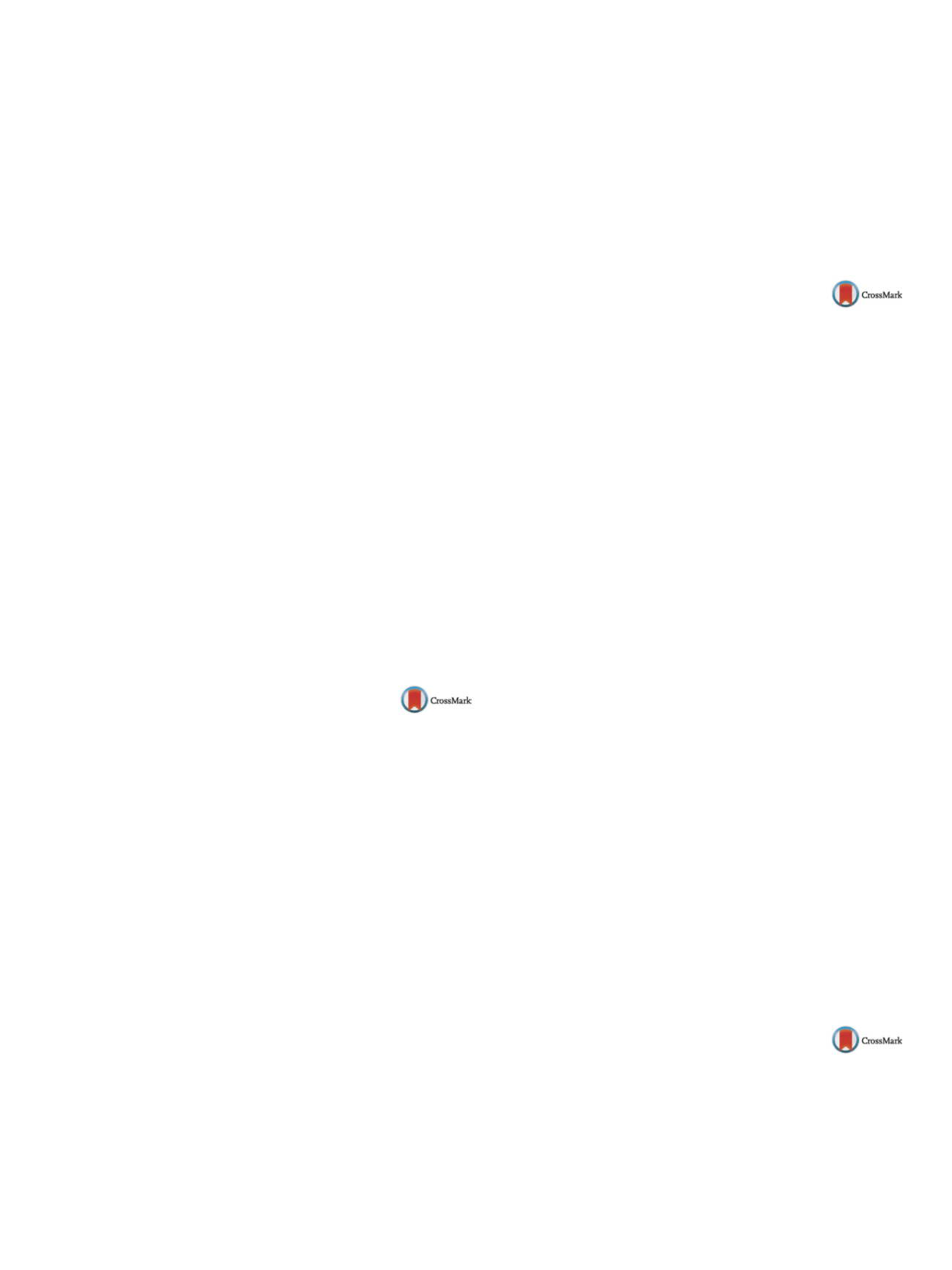

25th European congress of psychiatry / European Psychiatry 41S (2017) S365–S404
S375
4
University of Groningen, University Medical Center Groningen,
Department of Old Age Psychiatry, Groningen, The Netherlands
∗
Corresponding author.
Introduction
John Farquhar Fulton was an American neurophys-
iologist and historian, who pioneered psychosurgery based on
animal experiments. Together with psychologist Carlyle Jacobsen,
Fulton presented the results of bilateral frontal lobe ablation in
chimpanzees. This study prompted neurologist Egas Moniz and
neurologist Walter Freeman to perform similar brain surgery on
human subjects.
Objectives
To present the scientific papers of John Farquhar Ful-
ton on psychosurgery.
Aims
To review available literature and to show evidence that
John Farquhar Fulton made a significant contribution to the devel-
opment of psychosurgery.
Methods
A biography and research papers are presented and dis-
cussed.
Results
Fulton and Jacobsen experimented with ‘delayed
response tasks’ in chimpanzees. The aim was to test the animal’s
capability to memorize the correct location of the food. They
found that after sequential ablations of the left and right frontal
association cortices these memory tasks became significantly
difficult for the monkeys to perform. The researchers saw parallel
conclusions in clinical cases of human frontal lobe damage.
Conclusions
An investigation into the role of the limbic system is
one of the crowning achievements of John Farquhar Fulton, as this
has influenced even today’s thinking about the role of the limbic
system. We should thank Fulton for his pioneering work as mod-
ern psychosurgery has gradually evolved from irreversible ablation
to reversible stimulation techniques, including deep brain stimu-
lation.
Disclosure of interest
The authors have not supplied their decla-
ration of competing interest.
http://dx.doi.org/10.1016/j.eurpsy.2017.02.393EW0780
Analysis of ECT indications in the
hospitalized psychiatric patients
A. Mihaljevic Peles
1 ,∗
, M. Bajs Janovic
1, A. Strucic
2, S. Janovic
11
University Hospital Zagreb, Department of Psychiatry, Zagreb,
Croatia
2
School of Medicine, University Hospital Zagreb, Department of
Psychiatry, Zagreb, Croatia
∗
Corresponding author.
Introduction
Electroconvulsive therapy (ECT) has been consid-
ered a treatment option for the treatment resistance, mania,
depression, suicidality and schizophrenia. It has been still contro-
versial due to the lack of controlled clinical trials and unknown
biological basis but also because of the negative image from the
history of the treatment.
Objective
Specifics of the clinical judgement on when and for
which patients’ indications, ECT was a treatment choice.
Aim of the study was to evaluate indications for the ECT treatment
in the hospitalized psychiatric patients at the psychiatric depart-
ment.
Method
For all the patient cases in the last 7 years at the depart-
ment (
n
= 326), data was analyzed regarding age, gender, number of
hospitalizations, age of first episode, diagnose, previous treatment,
leading indication for ECT and outcome after the ECT, regarding
following treatment.
Results
The leading indication for ECTwas psychosis and/or phar-
macological treatment resistance, followed by suicidality. Patients
with psychosis were younger than patients with other diagnoses
when receiving ECT treatment. Regarding the results, indications
for ECT had been partially differentiated from expected guidelines.
Outcomes after the ECT were favorable in terms of better control-
ling the symptoms, lowering exacerbation frequency and intensity
and partially, functioning.
Conclusion
Studies on ECT indications and outcome could pro-
vide further insight on efficacy of the treatment, and possible
improvements in clinical assessment on eligible patientswho could
benefit from the ECT treatment.
Disclosure of interest
The authors have not supplied their decla-
ration of competing interest.
http://dx.doi.org/10.1016/j.eurpsy.2017.02.394EW0781
A systematic review and
meta-analysis of the mortality rate of
electroconvulsive therapy (ECT)
N. Torring
1, S.N. Sanghani
2, G. Petrides
2, C.H. Kellner
3,
S.D. Ostergaard
1 ,∗
1
Aarhus University Hospital, Psychosis Research Unit, Risskov,
Denmark
2
The Zucker Hillside Hospital, Hofstra Northwell School of Medicine,
Department of Psychiatry, Glen Oaks, NY, USA
3
Icahn School of Medicine at Mount Sinai, Department of Psychiatry,
New York, NY, USA
∗
Corresponding author.
Introduction
Electroconvulsive therapy (ECT) is an efficacious
treatment for many mental disorders, but is underutilized because
of fears of adverse effects, including the risk of death.
Objectives and aims
To provide a full picture of the magnitude of
ECT-related mortality worldwide.
Methods
We performed a systematic review and meta-analysis
(PubMed and Embase) in accordance with the Preferred Report-
ing Items for Systematic Reviews and Meta-Analyses (PRISMA)
guideline. Only publications reporting on a specific number of ECT
treatments as well as specific number of ECT-related deaths were
included in our analysis. The ECT-related mortality rate was cal-
culated by dividing the total number of ECT-related deaths by the
total number of ECT treatments. The 95% confidence interval (95%
CI) of this estimate was calculated using Bernoullis principle of
distribution.
Results
Fourteen studies with data from 32 countries reporting
on a total of 757,662 ECT treatments met the predefined inclusion
criteria. Fifteen cases of ECT-related death were reported – yielding
an ECT-related mortality rate of 2.0 per 100,000 treatments (95%
CI: 1.0–3.0). In the eight studies published after 2001 (covering
406,229 treatments), no ECT-related deaths were reported.
Conclusions
The ECT-related mortality rate was estimated at 2
per 100,000 treatments. For comparison, a recent meta-analysis
on the mortality of general anaesthesia in relation to surgical pro-
cedures reported a mortality rate of 3.4 per 100,000. Thus, our
systematic review andmeta-analysis documents that death caused
by ECT is extremely rare. This information can be used to reassure
patients in need of ECT.
Disclosure of interest
The authors have not supplied their decla-
ration of competing interest.
http://dx.doi.org/10.1016/j.eurpsy.2017.02.395EW0782
The changes of social performance
with transcranial magnetic
stimulation (TMS) in depressed
patients
M. Pirmoradi
1 ,∗
, B. Dolatshahi
2, R. Rostami
3,
P. Mohammadkhani
2, A. Dadkhah
21
Iran University of Medical Sciences, Clinical Psychology, Tehran, Iran
2
University of Science Welfare and Rehabilitation, Clinical
Psychology, Tehran, Iran


















